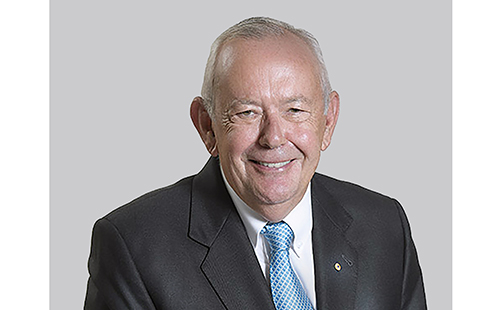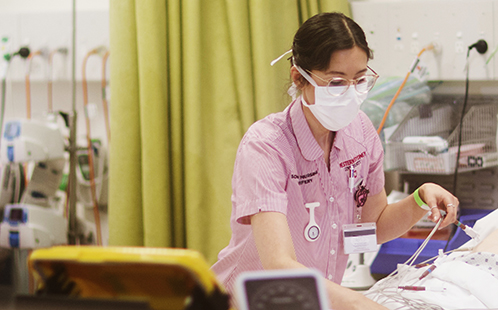Labor makes $20 million commitment to grow Western Sydney University’s agtech expertise
Assistant Vice Chancellor Dr Andy Marks speaks at Western Sydney University's Hawkesbury campus.
The Acting Leader of the Federal Labor Opposition, the Hon Tanya Plibersek MP, has announced a $20 million commitment to Western Sydney University to create a specialist Agri-tech and Protected Cropping Research Facility at the University’s Hawkesbury Campus in Richmond, NSW.
To be established adjacent to the University’s state-of-the-art, $7 million glasshouse, opened in 2017, the new facility will enable the world-leading gains in intensive food production and technology made in the glasshouse, to be harnessed through vastly upscaled research.
Vice-Chancellor of Western Sydney University, Professor Barney Glover, noted the University has focused on agribusiness teaching, research and industry collaboration at its Hawkesbury campus as part of a decadal strategy that responds to the next wave of nationally significant agribusiness opportunities.
“With Labor’s industry-boosting investment, the Hawkesbury is set to become the ‘World’s Food Bowl’ through global supply chains. Western Sydney University welcomes this strong support for its proven research strengths, which in turn will underpin significant growth in a multi billion-dollar knowledge-job industry,” said Professor Barney Glover.
Identified as a ‘priority industry’ under the Western Sydney City Deal, agri-technology has the potential to value-add $20 billion to the agriculture sector. Combined with the opportunities presented by Western Sydney's Badgerys Creek airport, the glasshouse and new Labor funded research facility will have access to markets around the world allowing 36 hours from production to consumption.
“Labor’s funding commitment is the strongest indication from any government that it is serious about developing this key knowledge-job sector in western Sydney. With this support, the Hawkesbury region can play a central role in the economic transformation of western Sydney. It’s also a win for research, skills growth and industry partnership possibilities,” said Assistant Vice-Chancellor Dr Andy Marks.
The new research facilities will focus on food production and biosafety, and will have the potential to commercialise locally developed food technology, particularly in the Indo-Pacific region. “It’s about using technology to produce higher yields of a superior quality on a smaller footprint and in a quicker timeframe,” said Dr Marks.
The National Vegetable Protected Cropping Centre at Western Sydney University, and its associated research projects, are funded by Hort Innovation using grower levies and funds from the Australian Government, with co-investment from Western Sydney University
For further information and interviews, please contact Imogen Corlette, Director of the media unit at Western Sydney University, on 0406 316 249 or email media@westernsydney.edu.au.
Facts
- Labor’s $20 million commitment to Western Sydney University will be funded through the $300 million higher education infrastructure and priorities pool already agreed to by Shadow Cabinet.
- Deloitte identified agribusiness as “one of the ‘fantastic five’ industry sectors which has the potential to take over from mining as key drivers of growth opportunities for the Australian economy”.
- Research from the Hawkesbury Institute will focus on food production, boosting nutrition in fresh food supply, and will examine ways to ensure faster, higher yield crops to market.
About The Hawkesbury Institute
The Hawkesbury Institute is Western Sydney University’s leading centre of research excellence in ecosystem function and environmental responses to changing climates, facilitating decision-making in natural and managed land-based ecosystems. With extensive national and international collaborations and partnerships, the Institute offers access to world-class research facilities and scientific talent.
About the Glasshouse
The Glasshouse — measuring 1,728 square metres — comprises eight temperature-controlled research bays and one large-scale teaching bay all utilising climate control technology. Features include diffused glass and smart glass coatings that adjust the spectrum, direction and intensity of light to produce the highest possible commercial-yields with minimal energy, labour, nutrients and water inputs.
ENDS.
25 September 2018
Latest News

Opinion: Most bees don’t die after stinging – and other surprising bee facts
Most of us have been stung by a bee and we know it’s not much fun. But maybe we also felt a tinge of regret, or vindication, knowing the offending bee will die. Right? Well, for 99.96% of bee species, that’s not actually the case.

Western Sydney University receives transformational donation to support LGBTIQA+ community
Western Sydney University has welcomed a philanthropic donation from The Brennan Lynch Foundation.

Western Sydney University ranks among world’s best for 23 subjects
The University has been named as one of the world’s top universities for the study of 23 subjects in the latest edition of the QS World University Rankings by Subject, including being ranked in the top 50 for Nursing.
Mobile options:


